Films often influence our perception of a country and its people; they can provide insights about the nation’s culture, social values, and certain personality traits. But understanding a landscape or a country through films has its own limitations. As Nigerian author Adichie says, ‘single stories are dangerous’ since they can create critical misunderstandings of people and their lives. In general, Australian movies could be deemed as grim, depressing, joyless, violent, crude, and so on. But it would simply show that one hasn’t seen enough Aussie films to discover the nation’s multi-faceted tales.
Australians have been making films for more than 100 years. The Story of the Kelly Gang (1906) is said to be the origin point of film production in Australia. But it was only in the early 1970s that a new generation of filmmakers revolutionized Australian cinema with the support of the Australian Film Commission. Dubbed as the ‘Australian New Wave’, these films gained the attention of international audiences. In recent years, Australian cinema has given voice to the ostracized and the oppressed indigenous Australians, known as the ‘Aborigines’.
Considering how rich the film culture in Australia has been since the 1970s, it’s an arduous task to select only 30. Quick note: I didn’t include Jane Campion’s The Piano (1993) which despite being made with Australian funding, is a film totally set in New Zealand (Campion herself is a New Zealand filmmaker though she studied filmmaking in Australia).
So here’s my attempt in listing the best and important Australian films of all time:
30. Kenny (2006)
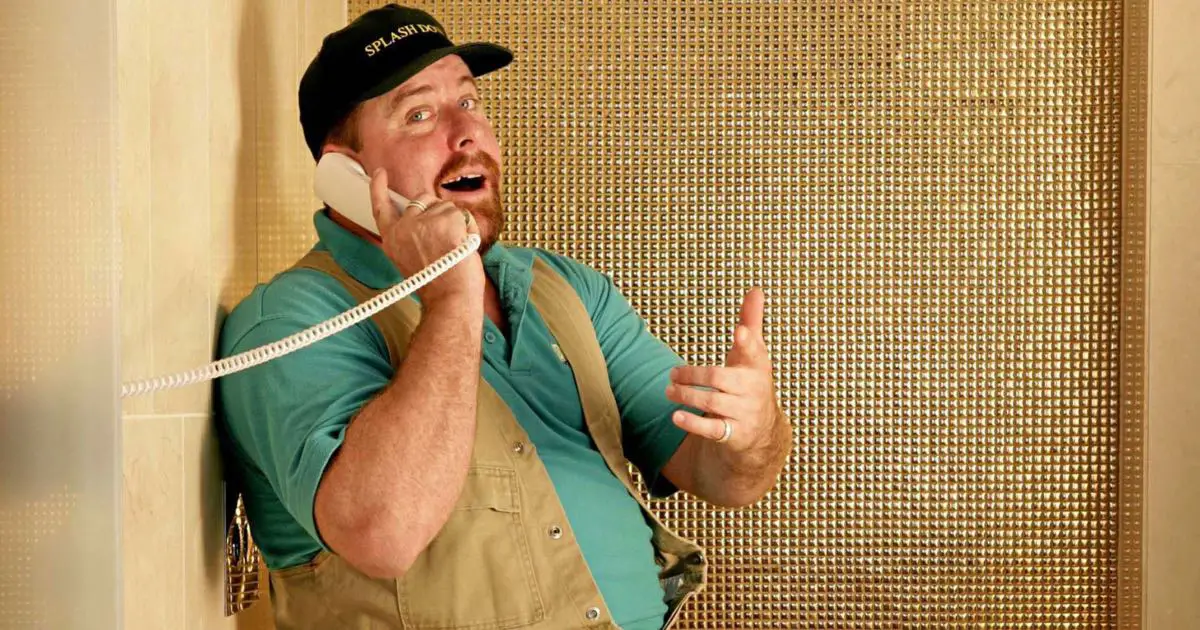
Shot in mockumentary style, this comedy drama follows the eponymous working-class hero, who is a plumber. Clayton Jacobson directed this film. He co-wrote the script with his brother Shane. Kenny, initially fits the stereotypical notions of quirky yet affable middle-aged working-class man. Gradually, as the narrative captures the minutiae of his day-to-day working life, there’s a fine balance between the laughs and character study.
Kenny’s strength is the spontaneous and unscripted feel it possesses, thanks to Clayton’s direction and Shane’s well-rounded performance in the titular role. Though warm-hearted, the film smartly eschews sentimentality. In terms of style and characterization, Kenny definitely brings to mind Rob Sitch’s The Castle. The Jacobson brothers’ recently collaborated for the intriguing dark comedy Brothers’ Nest (2018).
29. Gallipoli (1981)

Peter Weir’s Gallipoli tells the story of two Australian champion runners who enlist themselves during World War I. Mark Lee and Mel Gibson play the two central characters Archy and Frank, respectively. The duo is stationed at the peninsula of Gallipoli in Turkey. The film largely unfolds as a powerful tale of friendship, gradually inching towards the devastating third act.
Though Gallipoli is flawed in terms of writing, Peter Weir repeatedly stuns us with the sweeping vistas. More than being a cautionary tale about war, it’s a bit of coming-of-age drama as Archy and Frank contemplate the seriousness of their decision to go to the battlefront. The two central characters’ romanticism about being soldiers is completely wiped away in the hard-hitting, dark reality of the final moments.
28. Chopper (2000)

One of the most famous Australian movies based on a true story is director Andrew Dominik’s Chopper. Mark Brandon ‘Chopper’ Read is a violent criminal who’s spent much of his life behind bars. Though not a functioning member of the society, Read has gained a lot of media attention in his native Australia. His series of autobiographical books on his criminal exploits, particularly, became bestsellers. With Chopper, Dominik’s intention wasn’t to make a conventional biopic. He rather uses certain dramatization techniques to get close to understanding the enigmatic central figure.
Eric Bana offers a commanding performance in the eponymous role, often reminding us of great Robert De Niro’s performances. Chopper pushed Eric Bana towards the road to Hollywood. Furthermore, former music video director Dominik went on to make two intriguing movies with Brad Pitt. Chopper also makes a fine double bill with Refn’s Bronson (2009).
27. Baby Teeth (2019)
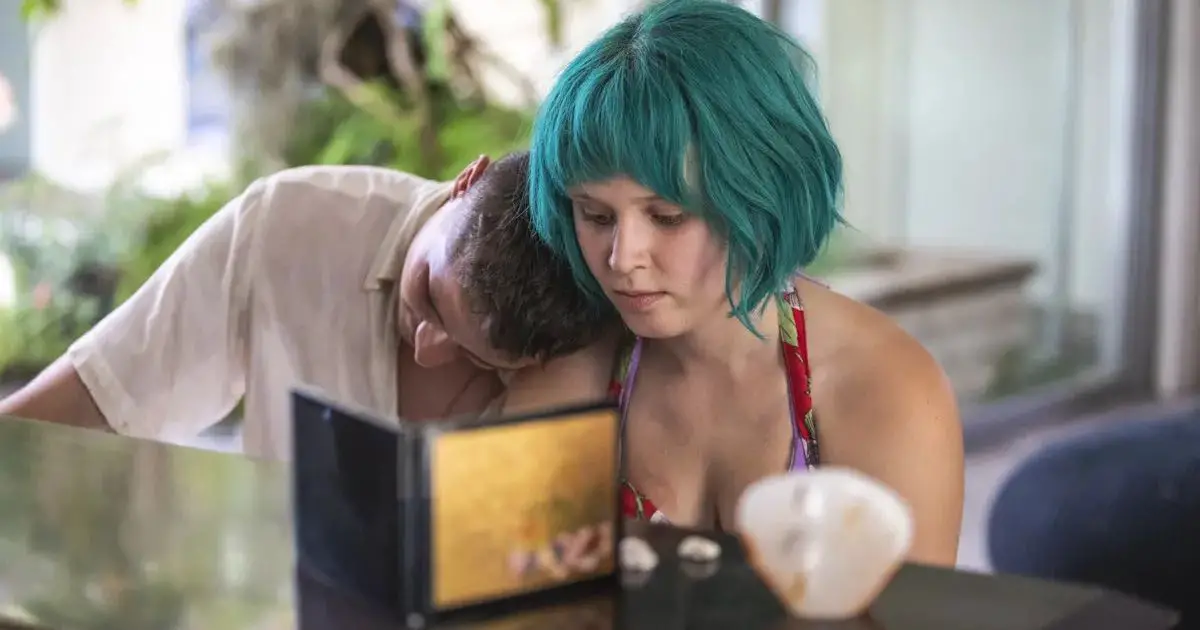
Shannon Murphy’s marvelous directorial debut is a tragicomedy revolving around a teenager facing terminal cancer. Though teens dying young is a recurrent and time-worn theme in cinema, Baby Teeth handles it with great sensitivity and nuance. The narrative is based on screenwriter Rita Kalnejais’ own play which unfolds in an episodic manner. Eliza Scanlen as the central character Milla gives a performance that looks natural and unmanufactured.
Director Murphy avoids using illness to incorporate manipulative scenarios. It is genuinely touching. What’s more interesting is Murphy’s wicked sense of humor. Essie Davis and Ben Mendelsohn who play Milla’s parents are uniformly excellent. Eventually, Baby Teeth finds a sense of optimism and beauty in unexpected places unlike any of the teen cancer dramas.
26. The Proposition (2005)

The vast, blistering landscape of the Australian Outback has inspired its filmmakers to try their hand at the Western genre. Wake in Fright, Mad Max, and The Man from Snowy River were some of the Australian New Wave movies with a Western set-up. Starting with Heer’s The Tracker, the Outback Western sub-genre was renewed. John Hillcoat’s The Proposition perfectly expanded the themes of Outback Western. The narrative is set during 1880s Australia. It tells a violent tale of revenge and hatred, strengthened by the terrific ensemble cast including Guy Pearce, Ray Winstone, and Emily Wilson.
Although Hillcoat’s storytelling is straightforward, his visual choices are enormously powerful. The Proposition paved the way for more fascinating Outback Westerns such as Red Hill (2010), Mystery Road (2013), Goldstone (2016), and The Nightingale (2018).
25. Proof (1991)
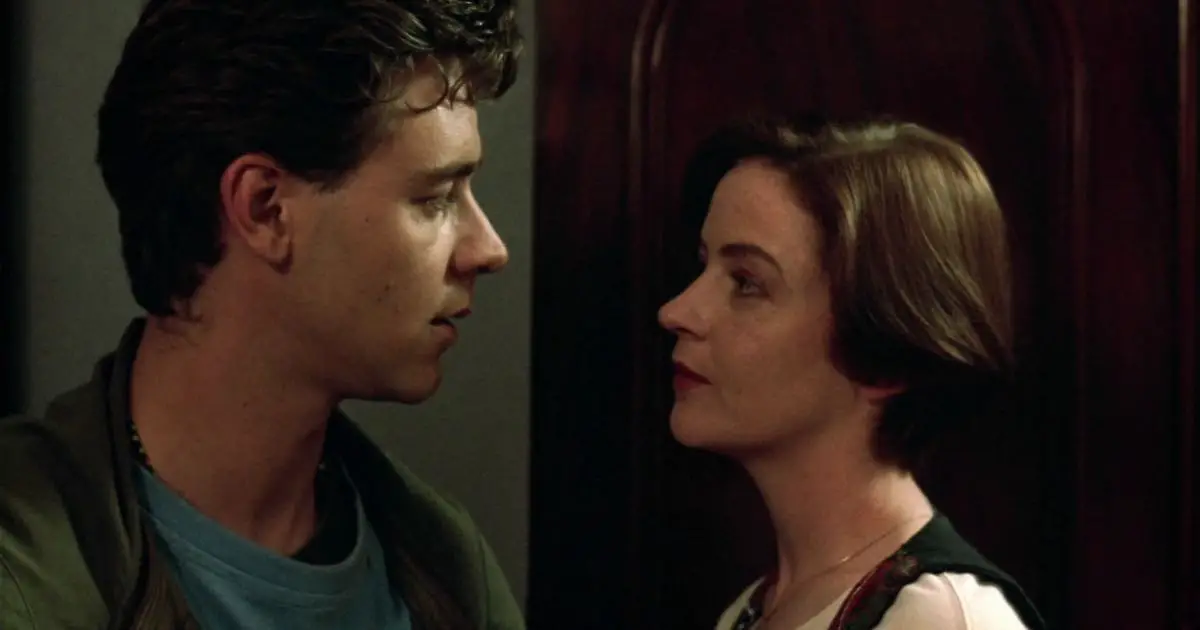
Hugo Weaving plays Martin in Jocelyn Moorhouse’s unique psychological drama, Proof. Martin takes photographs of everything around him. But he is blind, and depends on others to describe his photographs. Moreover, he trusts no one. But two people play an important role in Martin’s life. One, his lovely housekeeper, the other a restaurant worker Andy, who befriends Martin.
Proof is an absorbing film that moves like a thriller and has quite a few funny moments. Its distinct quality lies in the way Moorhouse treats the complex relationship between the three central characters. The dynamic interplay between them is fascinating to watch. The early great performances of Weaving and Russell Crowe (as Andy) bring unimaginable depth to the deceptively simple story.
24. Shine (1996)
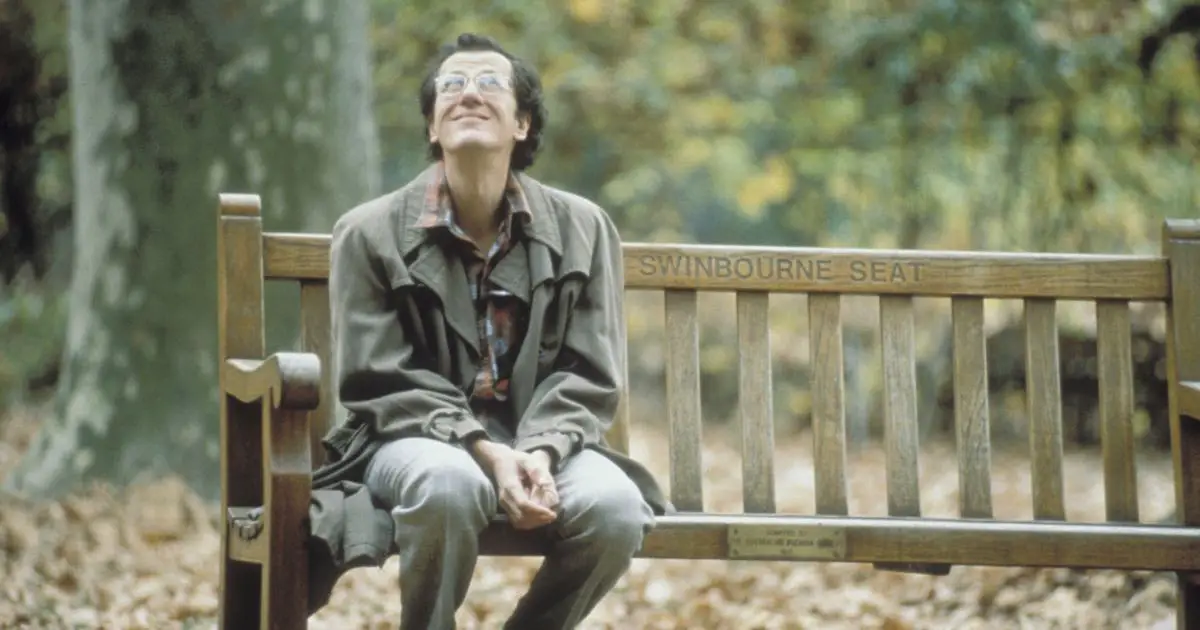
Scott Hicks’ Shine is a biopic drama, inspired by the true story of classical pianist prodigy David Helfgott. The gifted young David grows up in the 1950s, attempting to escape the reach of his domineering father. He wins a scholarship to get into Royal College Music of London. But just before his first big performance, David suffers from a nervous breakdown. He retreats to obscurity, but eventually in his middle-age, David makes a surprising comeback.
Shine is distinctly divided into three parts: troubled childhood, adolescence, and adulthood. Geoffrey Rush and Noah Taylor offer wonderful performances as the adult and adolescent David, respectively. Scott Hicks stays away from melodramatic excess, and sharply uses subjective cinematic devices to portray David’s painful inner emotions.
23. Samson and Delilah (2009)

Warwick Thornton’s directorial debut won the Camera d’Or at Cannes. It tells the love story of two uncommunicative Aborigine youths. The restless, glue-sniffing Samson lives with his brother. Delilah lives with her artistic yet fragile grandmother. They both are part of a broken-down indigenous community where boredom and instability are inherent. Circumstances bring together Samson and Delilah. They fall in love and attempt to move towards a more civilized world.
Thornton proves to be a great visual storyteller in his debut feature. He is inspired by neorealism and hence keeps the melodrama minimalist. The narrative gradually gets under your skin and reaches a devastating crescendo. The two exceptional central performances are another big strength to the film.
22. The Castle (1997)
Rob Sitch’s directorial debut reminds you of old-fashioned comedies blended with the very Australian weirdness and eccentricity. The Castle revolves around working-class everyman, Darryl Kerrigan and his lovely family. His home is situated next to an airport. When the airport authorities attempt to compulsorily acquire the land for expansion, Darryl and his clan fight against the system.
The Castle largely works because of the way it uses humor to highlight the family’s idiosyncratic manners. The director maintains a great balance between comedy and pathos. If the balance was slightly off, the characters would have turned into one-dimensional caricatures. Rob Sitch’s sophomore effort The Dish (2000), which revolves around a group of eccentric scientists, was equally delightful.
21. Sweet Country (2017)
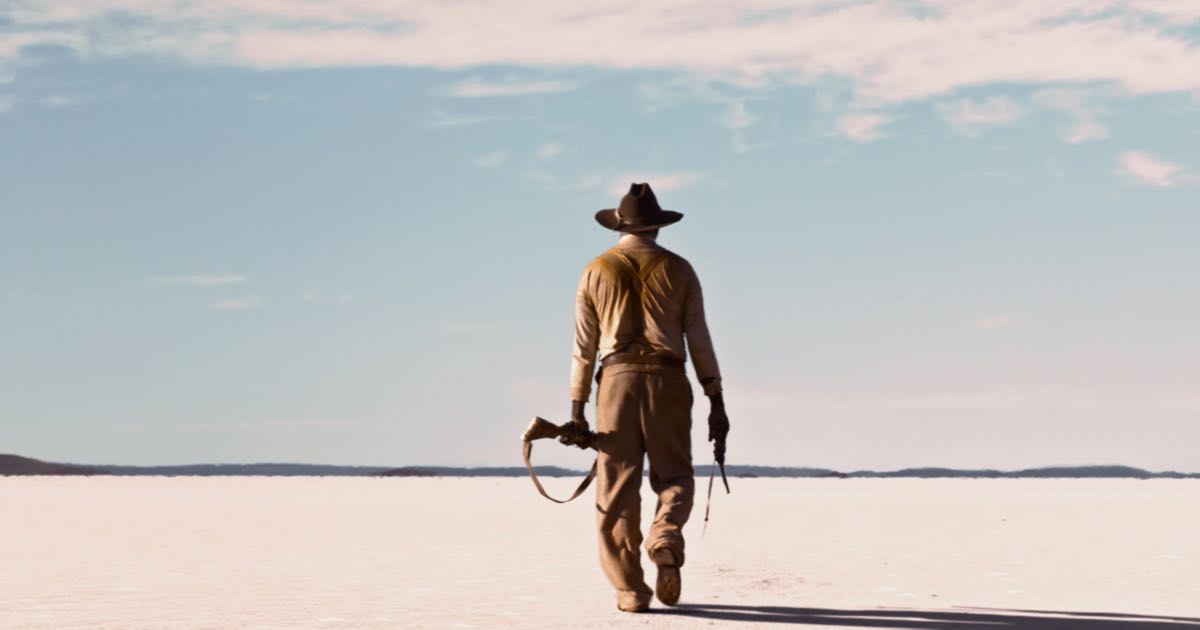
Sweet Country is a socially conscious Australian Outback Western made by the Aboriginal filmmaker Warwick Thornton. It’s a fascinating study of the indigenous community, its identity, and the irreparable aftershock of colonization. Based on a true story, the narrative is set in the 1920s in a small rural town in the Northern territories. It revolves around an Aboriginal man on the run and a police sergeant who must hunt him down.
Besides directing, Thornton also shot the film alongside Dylan River. The duo perfectly captures the Australian landscapes with all its lyrical glory. At the same time, Sweet Country is an angry film that denounces the violent, racist past of Australia. Sweet Country is one of the best Australian movies of the 21st century.
20. The Year My Voice Broke (1987)

John Duigan’s poignant coming-of-age tale contains the earliest big-screen leading roles for actors Noah Taylor and Ben Mendelsohn. Set in the 1960s rural Australia, the narrative revolves around a bookish, sensitive teenager, Danny. He is in love with his best friend Freya, who is dating a rebellious juvenile delinquent. The film touches some of the coming-of-age story clichés. Yet, Duigan’s light touch and poignancy bring universality to Danny’s experiences.
Bolstered by fine atmosphere, Duigan beautifully explores the anguish of adolescence, the related sexual yearning and identity crisis. The narrative also constantly refers to the cultural and social climate of the time. An equally strong sequel to the film was made in 1991 (Flirting), where Danny attends an all-male boarding school.
19. Lantana (2001)
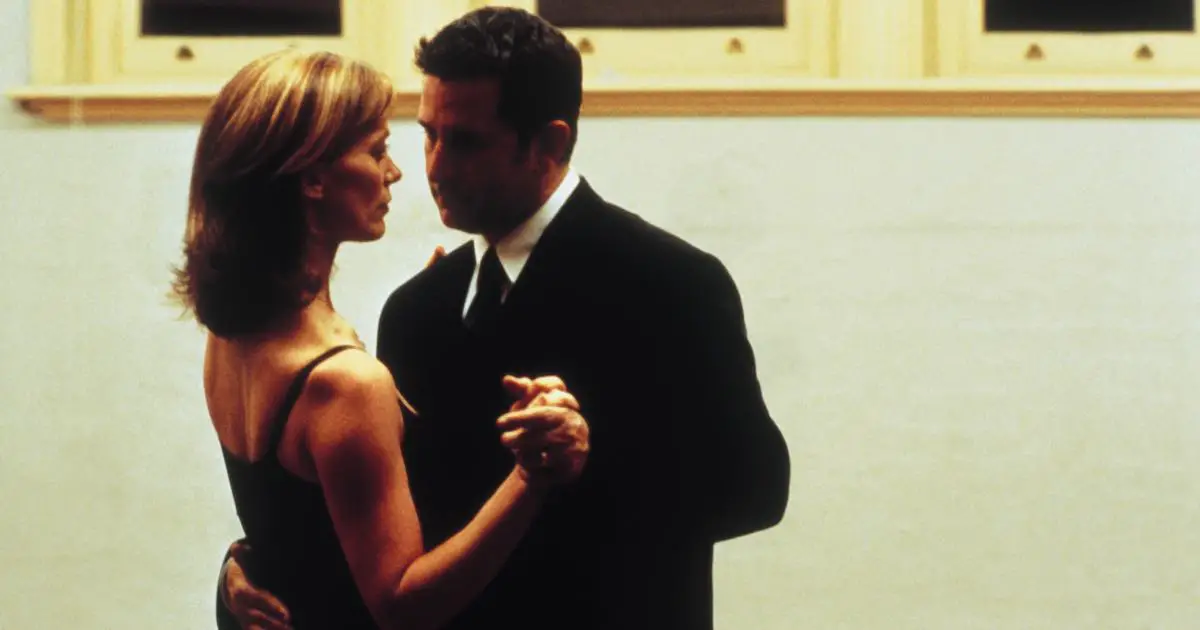
Similar to Robert Altman’s Short Cuts and PT Anderson’s Magnolia, Ray Lawrence’s film is a multi-character drama set in the suburbs of Sydney. Though Lantana opens with a dead body of a woman and its storyline sounds like a thriller, it largely zeroes-in on the emotional intricacies of relationships. It also deals with the themes of repression and infidelity.
The narrative is based on a play titled Speaking in Tongues, and playwright Andrew Bovell himself wrote the script. The writing is more detailed, layered, and well complimented by Lawrence’s low-key direction. The repeat viewings help us understand the quiet brilliance of the plotting and structure. Another biggest asset of the film is Anthony La Paglia’s terrific performance.
18. The Tracker (2002)
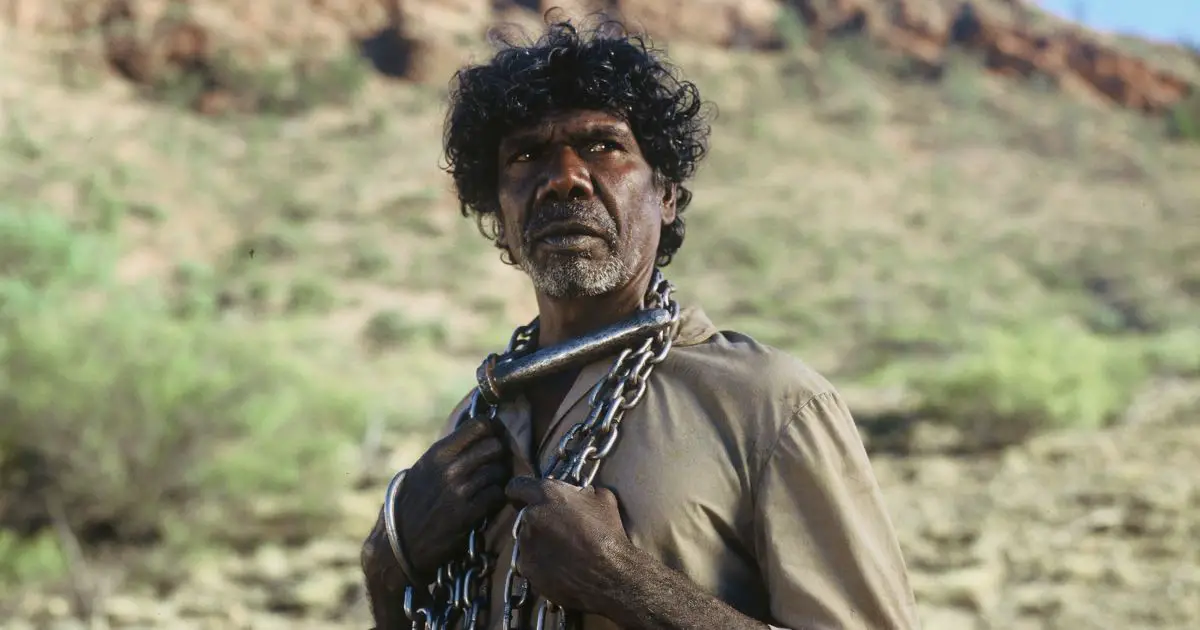
Rolf de Heer is one of the few white Australian filmmakers best known for their razor-sharp focus on indigenous issues. The Tracker was one of his first distinctive films on the Aboriginal community. The film has the simple narrative of a Western. It’s set in 1922, and a group of policemen are in pursuit of Aboriginal fugitive, accused of killing a white woman. Aiding them in their pursuit is a ‘civilized’ Aborigine tracker.
The Tracker’s clear-cut narrative structure is strengthened by Heer’s subtle commentary on the atrocities committed in the frontier. Moreover, renowned Aboriginal actor David Gulpill’s performance in the titular character makes this a thoroughly engrossing movie. He brings an enigmatic layer to the character as the tracker’s motivations are hard to interpret.
17. The Babadook (2014)
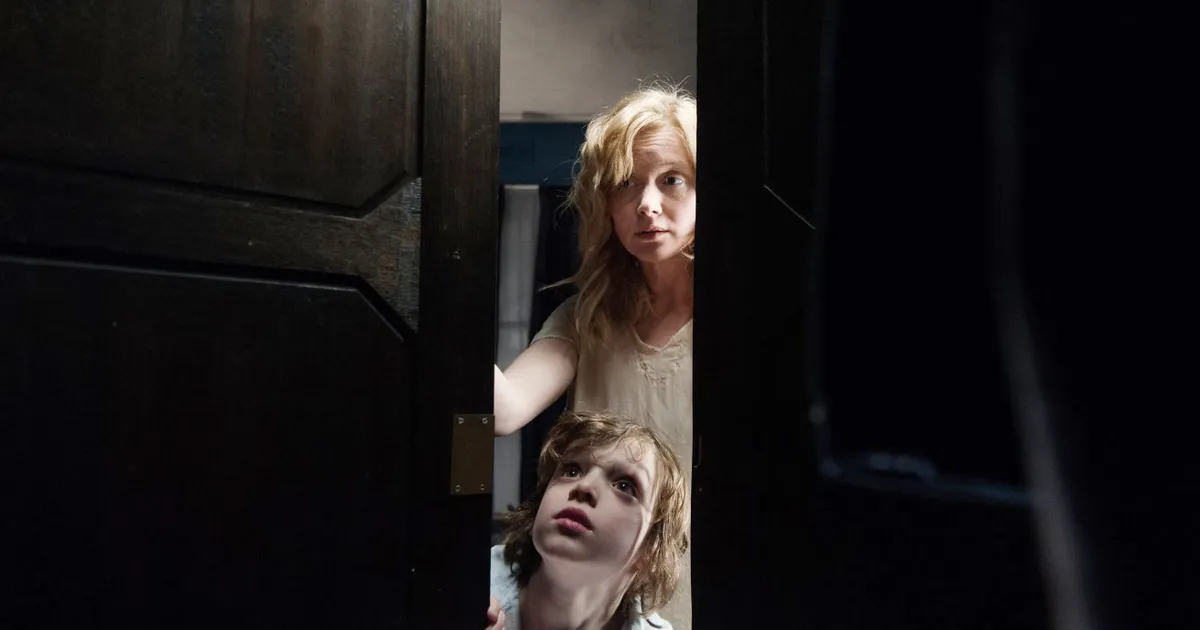
Jennifer Kent brilliantly explores the exhaustion and grief of single motherhood through the monster horror sub-genre in Babadook. Essie Davis plays Amelia who is haunted by the violent death of her husband. She struggles to pay attention and keep control over her hyper-active six-year old son, Samuel. This is when they discover a creepy children’s popup book, featuring the menacing Mr. Babadook.
Horror movies always get fascinating when the threat is deeply psychological. Kent deals with very real themes of stress, mental illness, and suppressed grief. At the same time, she magnificently delivers on the chills and thrills. Her style is more subtle, reminding us of the silent-era expressionistic style. Despite a polarizing ending, Babadook stands out as one of the best horror films of the 2010s.
16. Sweetie (1989)
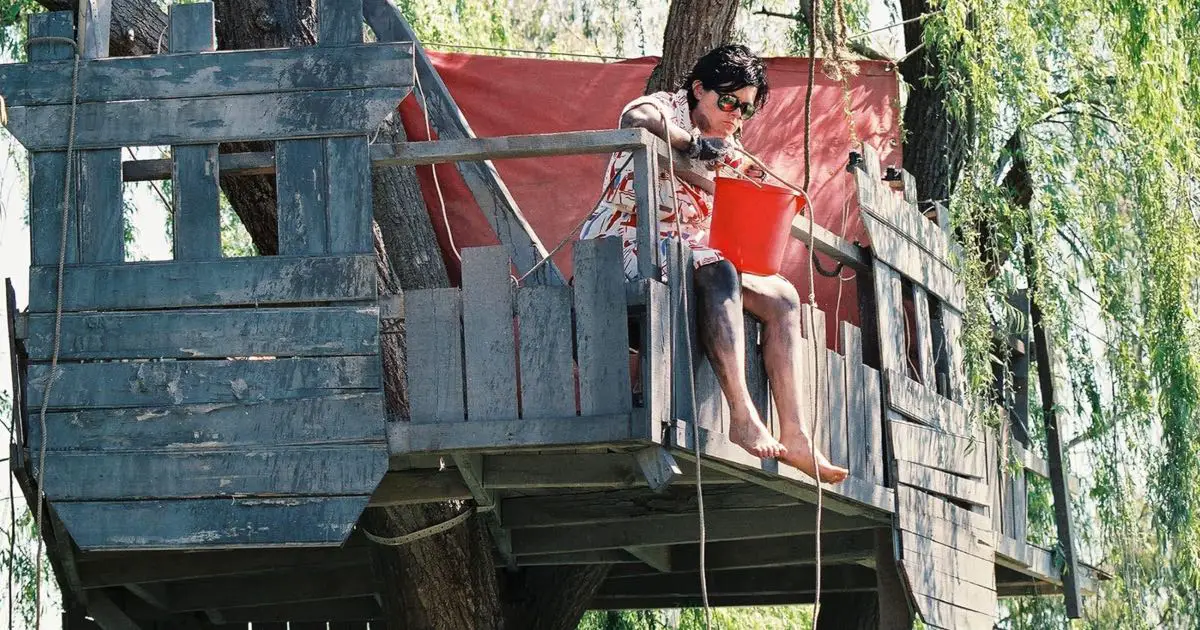
Jane Campion’s oeuvre has focused on women trying to overcome their circumscribed identities. In Sweetie, her directorial debut, Campion follows a 20-something woman named Kay struggling to establish her identity within a dysfunctional family environment. Kay’s frustration only increases manifold when her erratic, disturbed sister, Dawn ‘Sweetie’ arrives.
Sweetie is a restrained exploration of a family dealing with mental illness. Campion’s mannered visual choices perfectly convey a sense of dislocation and bleak disorder. The filmmaker has a way of getting under viewer’s skin through raw emotions and precise staging. This is evident in her debut feature too. Nevertheless, in Sweetie there are few conventional plot devices and plot diversions. Genevieve Lemon is absolutely terrific in the titular character.
15. Nitram (2021)
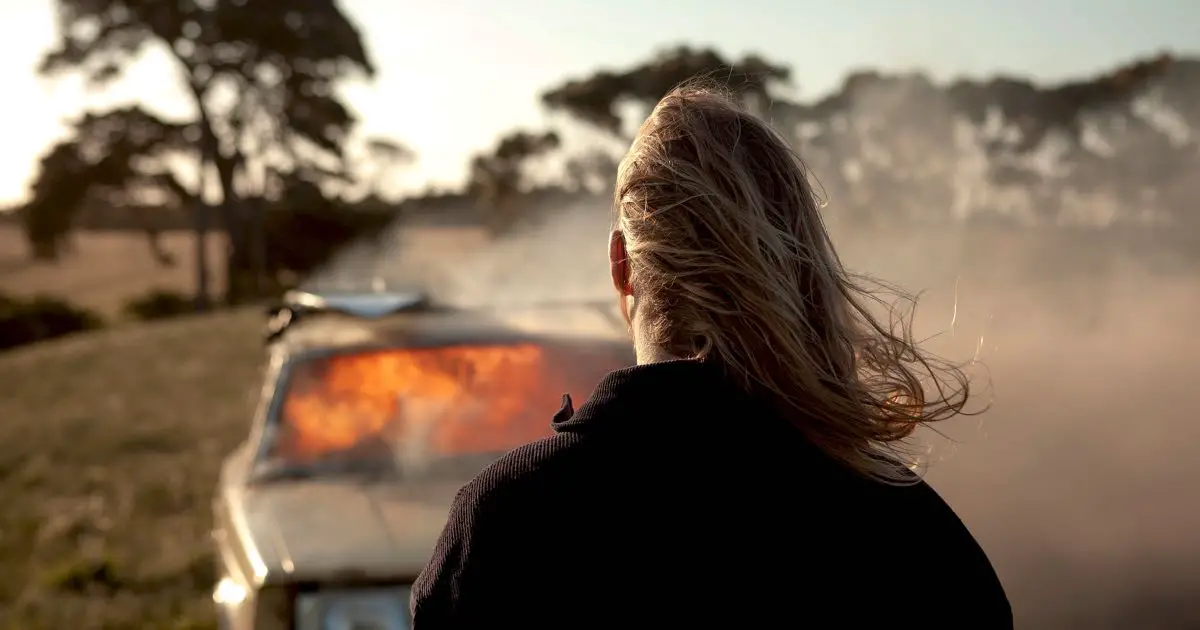
In 1996 in Port Arthur, Tasmania, 28-year old Martin Bryant claimed the lives of 35 people and injured 23. It’s considered to be the worst mass shooting in Australia’s history. Justin Kurzel’s Nitram offers a non-exploitative and sensitive look at the socially ostracized life of Martin who eventually became a unrepentant mass-murderer. Nitram also doubles-up as a critique on Australian society that let the red flag behavior of its troubled youth fester.
By omitting the massacre sequence, Kurzel also avoids sensationalism. He rather focuses on the little things that could have avoided this great tragedy. Kurzel previously made a similarly distressing biographic film titled Snowtown (2011). That film focused on a murder spree in a dismal Australian suburb.
14. Babe (1995)
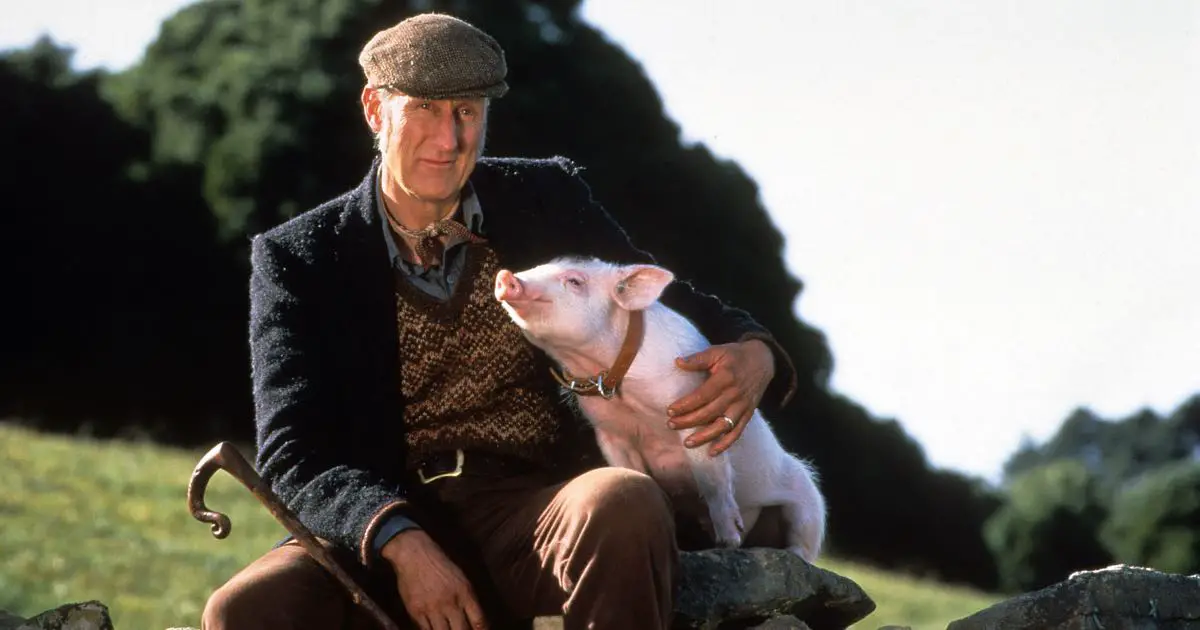
Only a few movies are able to transcend their genre limitations. Chris Noonan’s delightful Babe is one such exception. Adapted from Dick-King Smith’s children’s book The Sheep Pig, Babe tells the story of a piglet, who fortunately ends up at the home of farmer Hoggett, where the piglet comes across a diverse range of animal population.
Babe is a simple film that tells us not to view people through a stereotypical lens. And Noonan conveys this message in the most endearing and entertaining manner. Though labeled as a children’s film, it can be enjoyed by the kid within all of us. Talking animals movies rarely work. It’s different with anthropomorphized animated animals. But talking animals can look very unreal or hokey. Babe was a trailblazing success, particularly in the way it creatively mixed visual effects with the efforts of animal trainers.
13. Rabbit-Proof Fence (2002)

It’s a fact that modern Australia was built on the foundation of brutal and inhumane colonization policies. One such ugly chapter in Australian history is the law that made it perfectly legal for the government to take away half-caste children (mixed Aboriginal and White parentage) to ‘educational’ facilities. Set in 1931, Rabbit-Proof Fence opens with the ‘Chief Protector’ of Aborigines issuing an order to take away three half-caste children from their home.
The educational facility is more of an internment camp. The three girls eventually decide to return to their home, embarking on a 1,200-mile walk. Though the film tells a simple story, director Philip Noyce turns this into a profound emotional drama as well as an important historical document.
12. Bad Boy Bubby (1993)
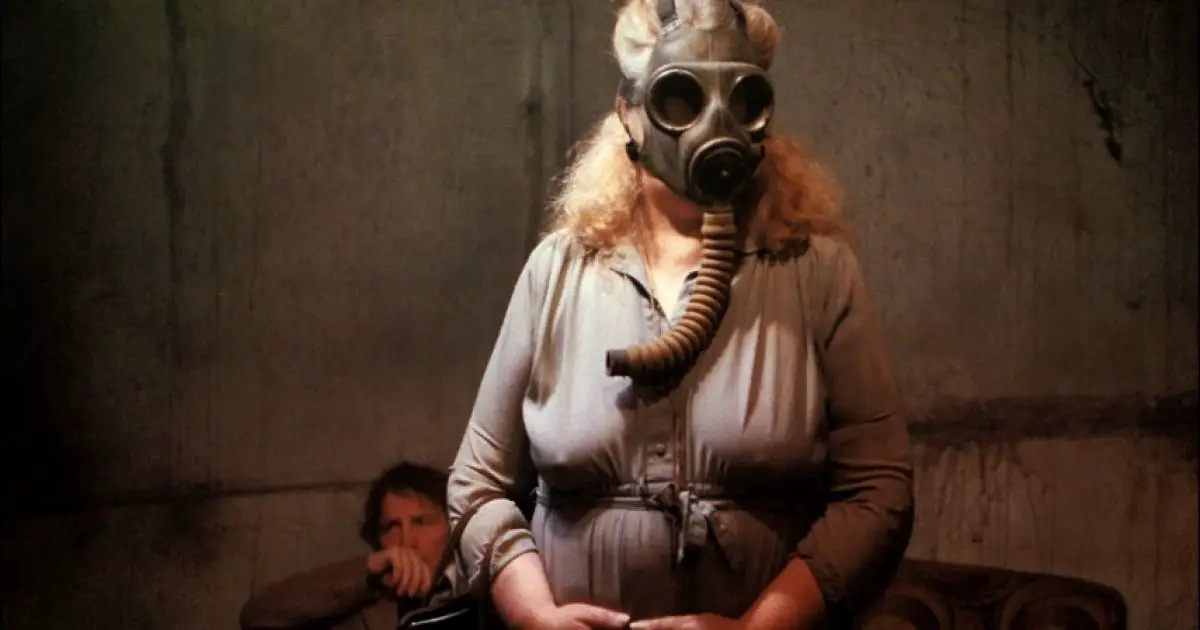
Rolf de Heer’s Bad Boy Bubby was a success in the art house circuits, picking up five awards at the Venice Film Festival. It also drew lot of controversies for its material, including an act of animal cruelty. The film tells the incredibly dark story of a 35-year old abused man-child. Bubby has literally lived all his life in his mother’s squalid apartment. The mother is a depraved individual, who has lied to him that the air in the outside world is poisonous. She also sexually and physically abuses him.
Eventually, circumstances lead the simpleton to encounter reality for the first time. Though the plot sounds very disturbing, Rolf de Heer ably crafts this as a dark satire on modern society. Heer’s thematic preoccupation reminds us of Werner Herzog’s works, and his visual style brings to mind David Lynch’s Eraserhead (1977).
11. My Brilliant Career (1979)

Gillian Armstrong’s My Brilliant Career is a nuanced coming-of-age period drama with strong feminist themes. Set in the 1890s, it tells the story of fiercely independent Sybylla Melvyn, who grows up on a farm, but imagines a career as a writer. Her impoverished family attempts to quell her artistic aspirations and burning passion with marriage.
The film is based on 1901 novel by Australian feminist author Miles Franklin. Gillian Armstrong adapts the book in an insightful and restrained manner. This was Armstrong’s feature-film directorial debut, who went on to make the 1994 movie version of Little Women. My Brilliant Career also marks the first leading role for actress Judy Davis. She admiringly captures Sybylla’s complexities without putting the character on a pedestal.
10. The Last Wave (1977)

Made right after the critical success of Picnic at Hanging Rock, Weir’s The Last Wave also tells a deeply mysterious story with no easy resolutions. The film opens with a sudden hailstorm hitting a dry village. Despite the foreboding opening sequence, the film features a simple murder trial at its centre. David Burton, a Sydney-based lawyer, reluctantly agrees to defend a group of aborigines accused of killing one of their own. David is surprised to see one man in this group named Chris. He has appeared in the attorney’s dreams.
Soon, David is disturbed by apocalyptic visions of a drowning world. The Last Wave is a visually stunning low-key thriller that subverts conventional storytelling. It also offers a thought-provoking look at the different spiritual beliefs of Aboriginal culture.
9. Mary and Max (2009)
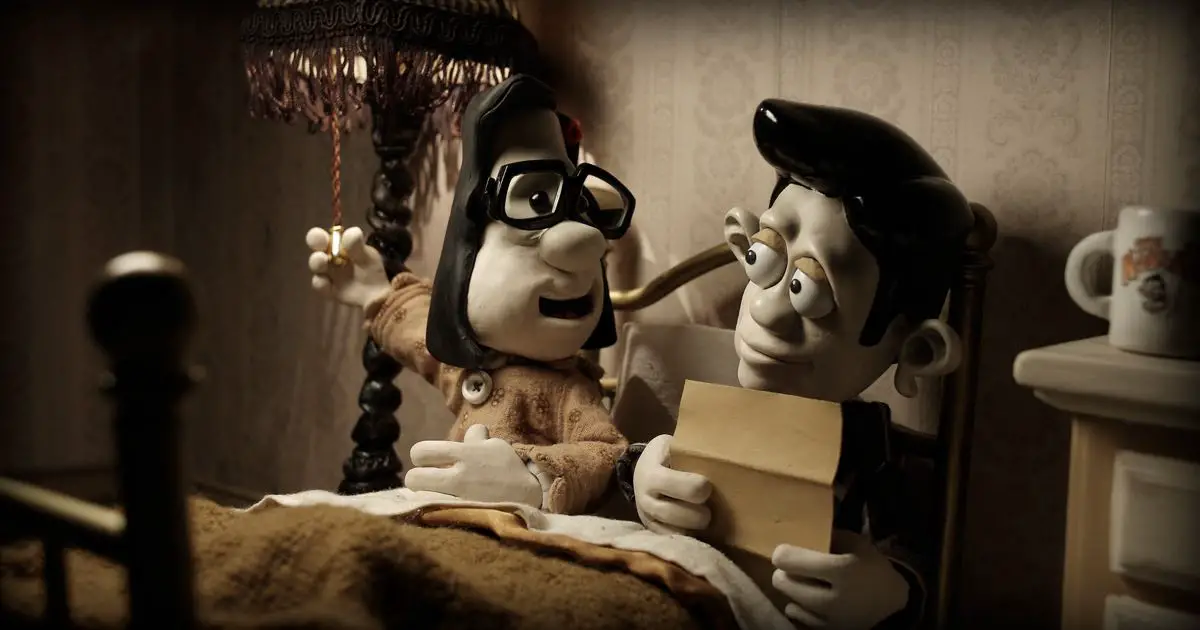
This is the only feature film of the extraordinary Australian stop-motion animator Adam Elliott. Before Mary and Max, he won an Oscar for his short animation Harvie Krumpet (2004). In Mary and Max, Elliott tells the tale of unlikely friendship between two eccentric outsiders. Mary is a bored eight-year old Australian girl whose pen-pal is Max Horowitz, a depressed middle-aged man living in New York.
Mary and Max is anything but cute and sentimental. Elliott’s visual tone is stark, the surroundings are largely colorless, and the humor is very dark. The filmmaker explores what it means to establish a friendship in this cruel and stressful world. The art direction and innovative ‘claymation’ makes this essential viewing.
8. Animal Kingdom (2010)
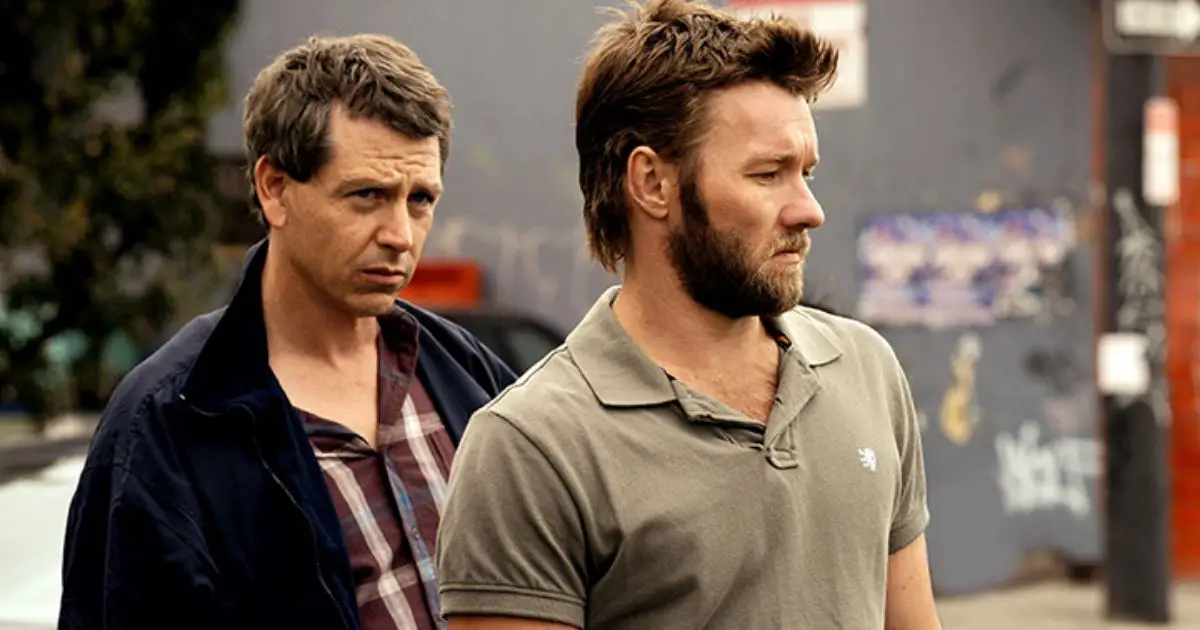
Dubbed as Australian Goodfellas, David Michod’s startling debut feature revolves around a morally bankrupt family of criminals. The narrative unfolds from the point of view of the family’s teenage member, Josh Cody. He comes to live with his sinister grandmother after the death of his mother due to drug overdose. The Cody family is already under crisis as the matriarch and her three brooding sons’ criminal operations are closely watched by the police.
The film features Australia’s star actors like Guy Pearce and Joel Edgerton. But the tense narrative is spearheaded by the strong performances of Weaver and Mendelsohn. Animal Kingdom is more realistic and dives deep into the psychology of the family members than any other narratives on criminal enterprises. Michod followed up Animal Kingdom with the fascinating dystopian drama The Rover (2014).
7. Ten Canoes (2006)
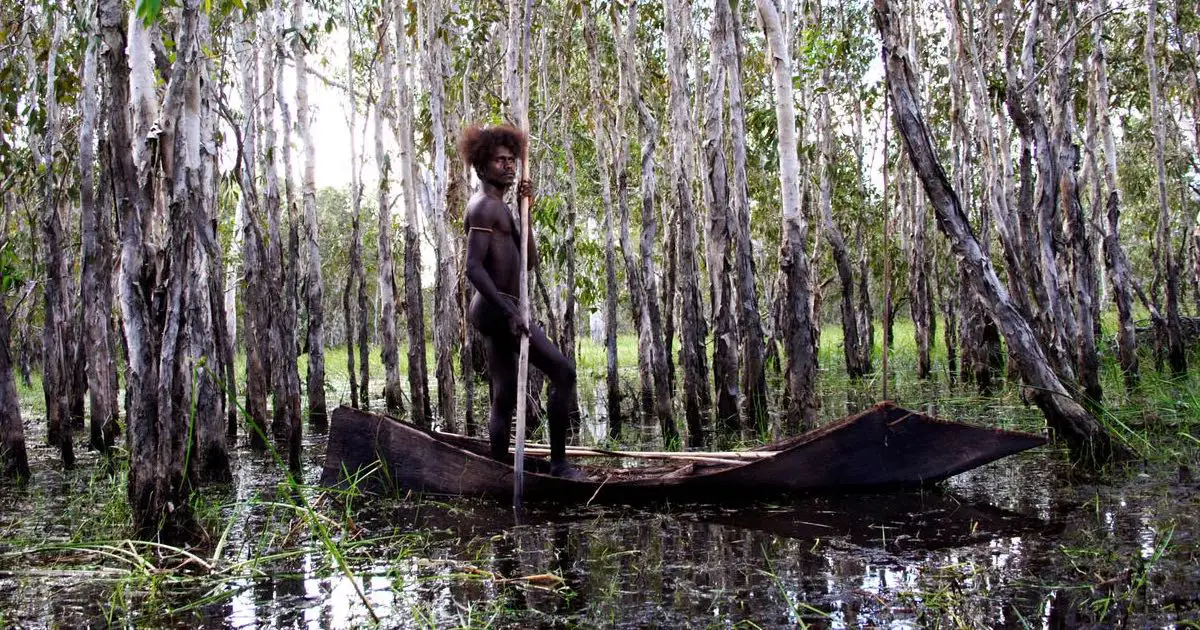
Rolf de Heer co-directed Ten Canoes with Peter Djigirr, an Aboriginal actor, producer, and a musician. The movie unfolds as a hybrid of ethnographic documentary and entertaining slice-of-life drama. Except for David Gulpill (who acts as the storyteller), the cast comprises non-acting Aborigines.
The film has the feel of an old fable as the narrative is set a long time ago in Australia’s Northern territory. It opens with ten men preparing for the hunt of magpie geese, a source of meat for the tribe. In order to hunt, they have to pass through crocodile-infested swampland by constructing canoes. What follows is an amusing as well as thought-provoking story about human nature. Ten Canoes offers one of the rare positive representations of Aborigine existence as hunter-gatherers, which are otherwise filled with racist perspective and historical falsification.
6. Picnic at Hanging Rock (1975)
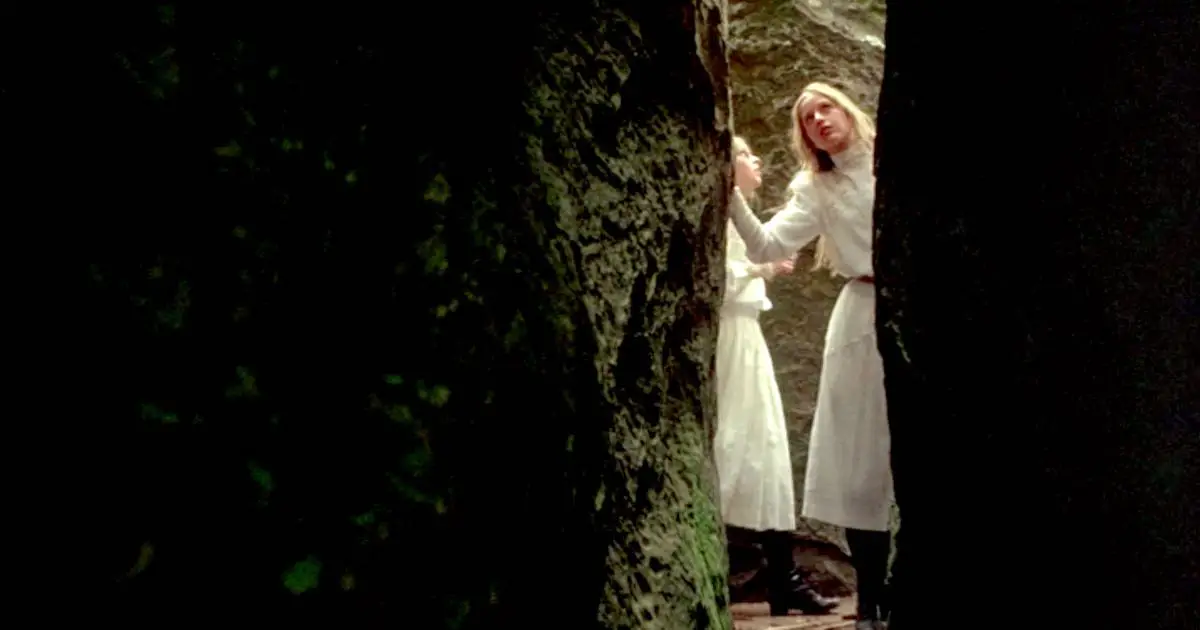
Peter Weir’s highly acclaimed feature is based on a novel by Joan Lindsay which is mistakenly assumed as a true story. On Valentine’s Day, 1900, a group of all-girls boarding school students in Victoria, Australia goes on a day trip to Hanging Rock. After picnicking for some hours, a few students decide to climb the rock, accompanied by a teacher. Only one girl of this small group returns, screaming in terror. The rest vanishes without a trace.
Though Picnic at Hanging Rock contains an interesting mystery, it doesn’t offer any answers or pat resolutions. It’s more a study of girlhood, in the backdrop of highly repressed Victorian-era Australia. However, the story and themes are timeless. The narrative also hints at inter-cultural tensions, since Hanging Rock is a spiritually sacred site for the Aboriginal tribe. Eventually, what’s most memorable about the film is its hauntingly atmospheric setting and bewitching musical score. Picnic at Hanging Rock is one of Australia’s first big internationally successful features.
5. The Chant of Jimmie Blacksmith (1978)
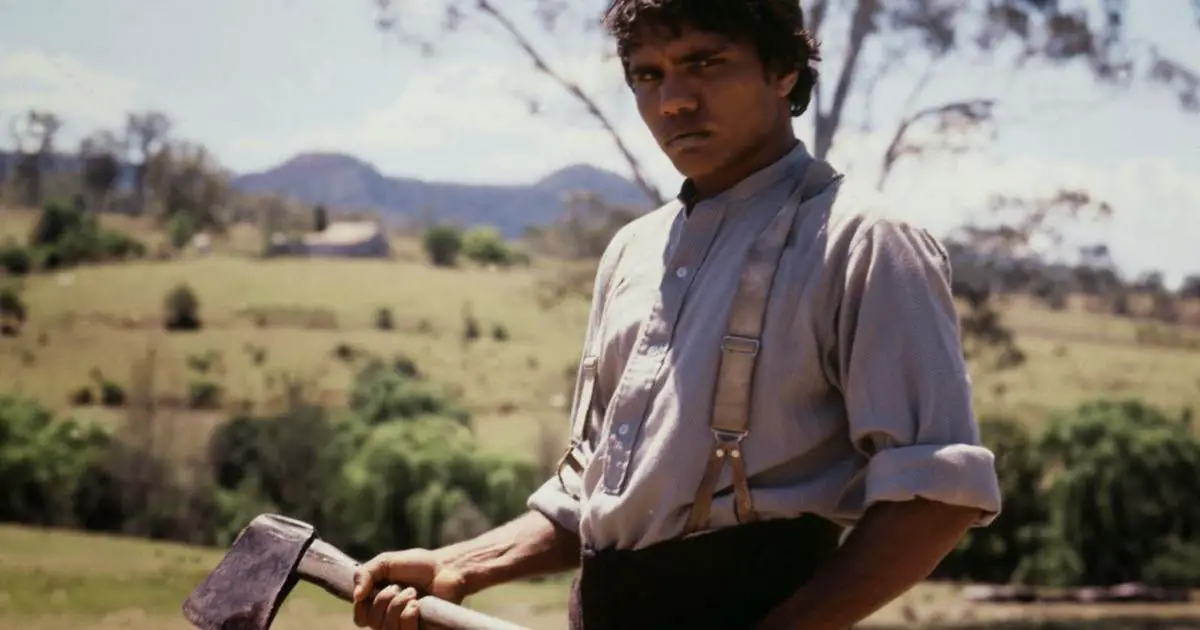
Fred Schepisi’s film is based on Thomas Keneally’s novel. Its central character was a half-caste Aboriginal man named Jimmie, who was modeled after the real-life colonial-era outlaw, Jimmy Governor (1875-1901). The film tells a tale of racial despair as Jimmie wasn’t wholeheartedly accepted into the Aboriginal world and repeatedly demeaned by the whites. The oppression reaches a dangerous boiling point and leads to Jimmie’s grisly crimes.
Fred Schepisi is one of the important Australian New Wave filmmakers. His directorial debut The Devil’s Playground (1976) was a hard-hitting coming-of-age story, set in the 1950s rural Catholic Seminary. In Jimmie Blacksmith, Schepisi’s approach was more understated and deeply contemplative. Though there were questions raised about a white filmmaker making a movie on Indigenous Australians, Schepisi offers a very complex look at the institutionalized racism heaped upon the Aborigines.
4. Walkabout (1971)
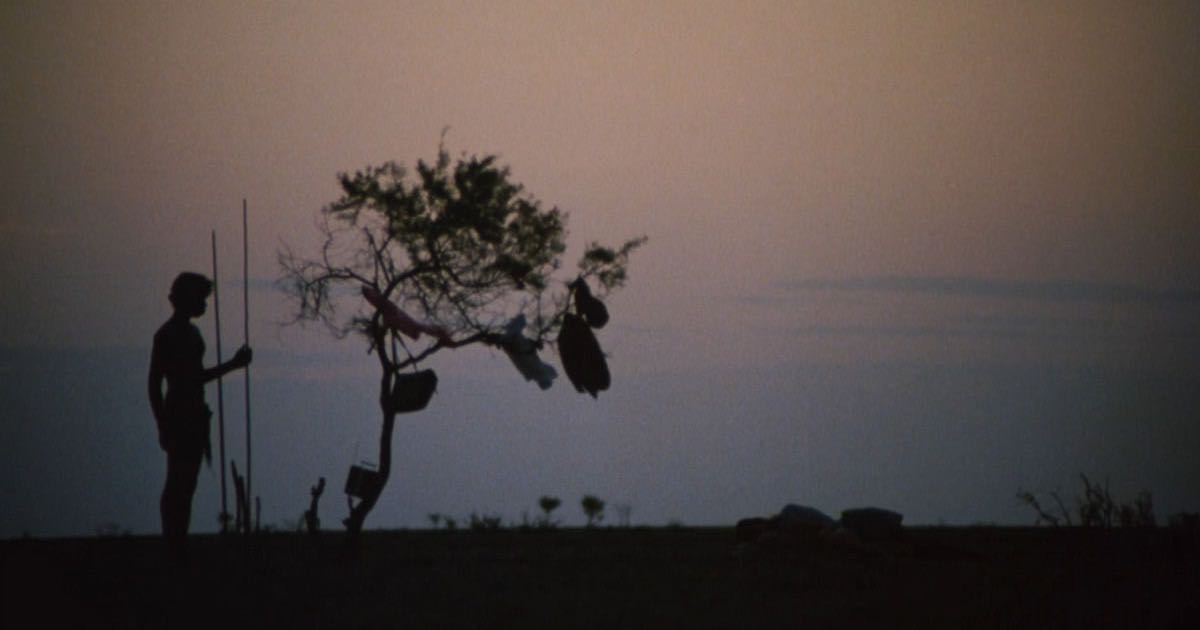
Nicolas Roeg is one of the important British filmmakers who often made films about outsiders inhabiting an atmosphere that’s totally alien to them. That scenario was literal in David Bowie starrer The Man Who Fell to Earth (1976). The singer plays a humanoid alien visiting from a distant planet in the movie. Walkabout also contains a similar, simple plot where two English children get lost in the harsh conditions of Australian outback.
In their wanderings, the teenage girl and her little brother meet an Aboriginal boy who teaches them the ways to survive in the wild. Although the plot is minimal, the film is hauntingly beautiful as Roeg explores human’s relationship with nature. Walkabout marks the acting debut of Aborigine actor David Gulpill, who later became a cultural icon for his people.
3. Mad Max Film Series
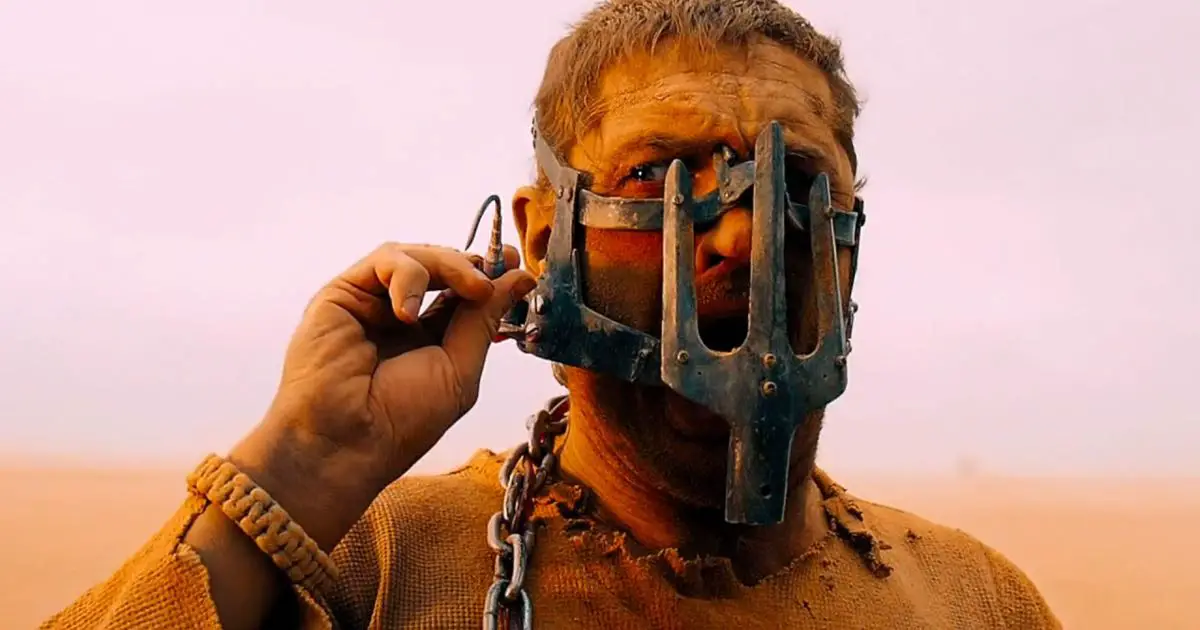
George Miller had the unique vision of re-imagining the vast Australian desert landscape as post-apocalyptic wasteland. The result was the original Mad Max Trilogy with Mel Gibson in the titular role. The trilogy became one of the most influential action films, leading to many copycat dystopian movies. The first installment of the series was only made on a $400,000-budget, and went on to make $100 million.
Though talks of a fourth film in the franchise were going around for years, it was only in the early 2010s that Mad Max: Fury Road went into production. Bolstered by an innovative mix of practical effects, visual effects, and supreme make-up, the film became one of the greatest action movies ever. Apart from being a fantastic action film, Fury Road also touched upon themes of female empowerment and environmentalism with great nuance. The Mad Max trilogy is streaming on Netflix.
2. Breaker Morant (1980)
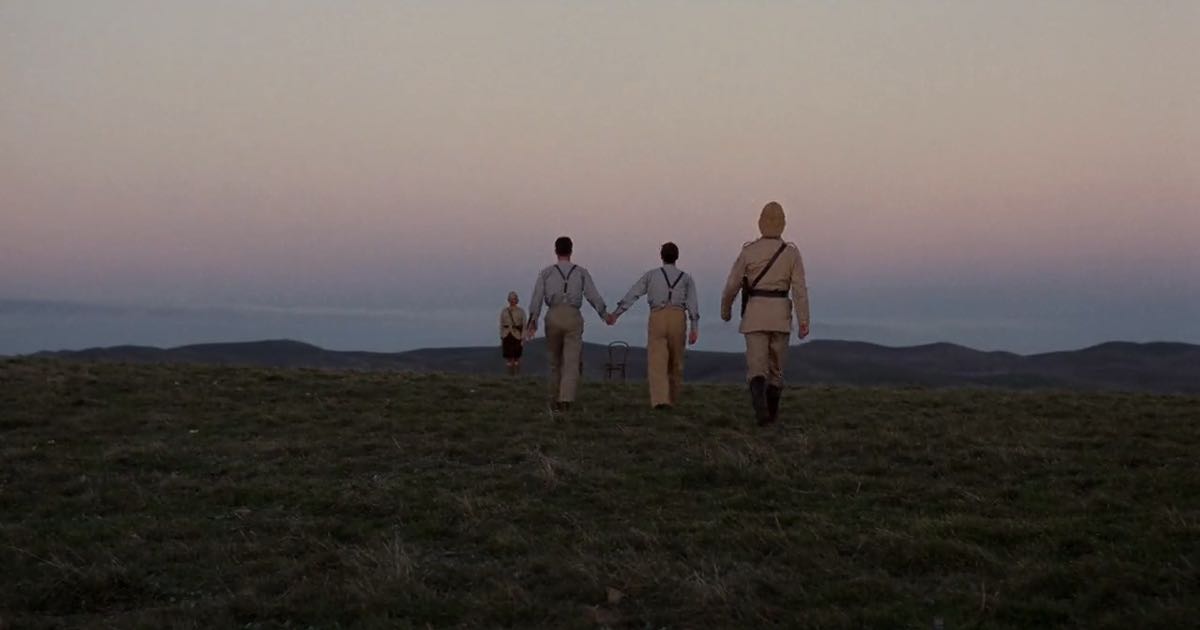
Bruce Beresford’s hard-hitting anti-war drama was based on a true story of the 1902 trial of three Australian lieutenants. The film’s dramatization and staging would naturally remind us of Stanley Kubrick’s Paths of Glory (1957). The three lieutenants are brought on trial for the murder of three Boer prisoners of war. But we soon learn that the trial is to cover-up hypocritical military blunders, and uphold the facade of diplomacy.
Breaker Morant largely unfolds as a courtroom drama. Though the outcome of the trial seems predetermined, the expertly staged courtroom scenes brilliantly expose the arrogance of military leadership. The film’s harrowing final moments are deeply impactful. Breaker Morant received an Academy Award nomination for its screenplay.
1. Wake in Fright (1971)
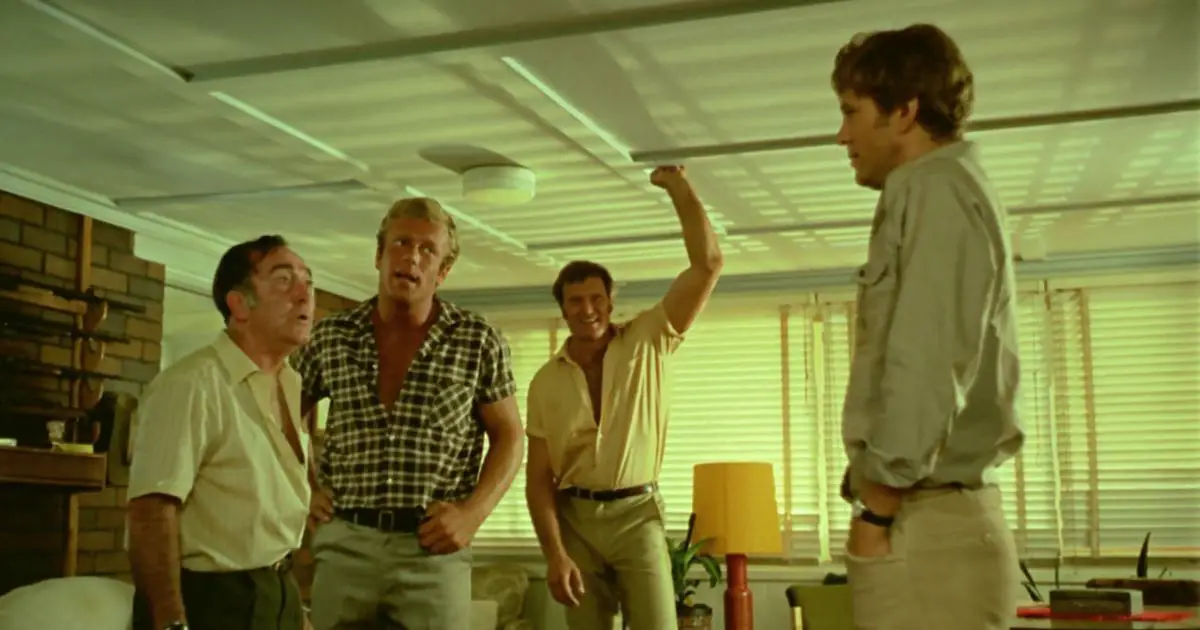
Ted Kotcheff’s Wake in Fright is hands-down the most terrifying film about Australia. Scorsese after watching it at the Cannes premiere called it, “deeply — and I mean deeply — unsettling and disturbing movie”. It was made a year before Boorman’s Deliverance, which revolved around city-bred men running into trouble with an isolated rural community. Wake in Fright doesn’t have a clear-cut structure like Deliverance. But it’s a more spine-chilling descent into the world of primal terror.
The narrative revolves around an elementary school teacher named John Grant. He hates his rural schoolhouse job, and hopes to meet his girlfriend in Sydney during Christmas holidays. But all hell breaks loose after a night of drinking. Though it’s schlocky and exploitative – in fact a classic of the sub-genre known as ‘Ozploitation’ – Wake in Fright offers a serious examination of violent masculinity. Moreover, the intimidating geographical vastness and isolation plus the blistering heat of Australian outback become a character in itself.
Conclusion
There we are! These are some of the best Australian movies ever made. As I said earlier, such lists are always subjective and limiting. There might be many other hidden gems which I am yet to discover. Storm Boy (1976), Newsfront (1978), Crocodile Dundee (1986), Dogs in Space (1986), A Cry in the Dark (1988), Celia (1989), Strictly Ballroom (1992), The Adventures of Priscilla, Queen of the Desert (1994), Muriel’s Wedding (1994), Somersault (2004), Wolf Creek (2005), The Loved Ones (2009), Charlie’s Country (2013), and Hounds of Love (2016) deserve a special mention.
With recent hits like The Dry, Penguin Bloom (streaming on Netflix), and High Ground, the Aussie film industry is thriving as well as staying relevant. What are your favorite Australian films that didn’t find a place on this list? Let us know in the comments below.
